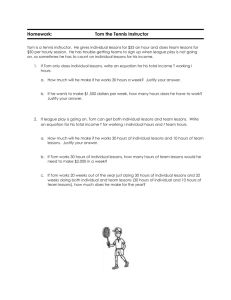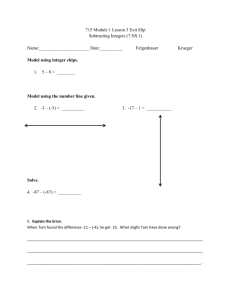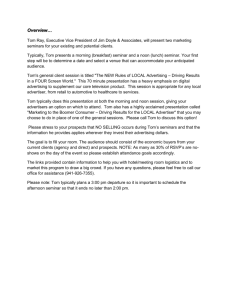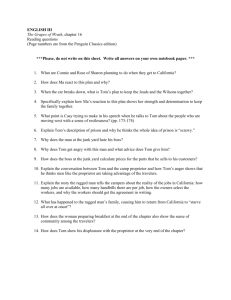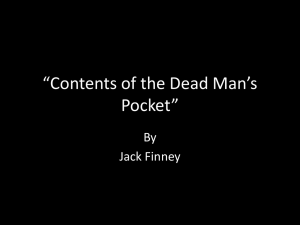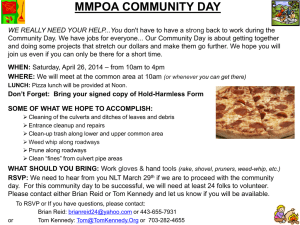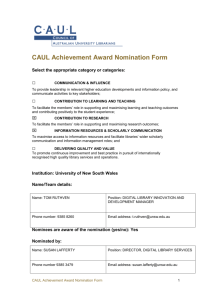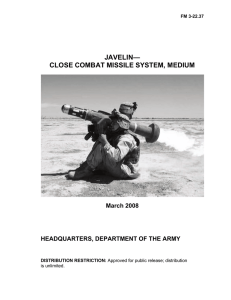THOMAS (TOM) LOFTHOUSE Australind, Western Australia Having
advertisement
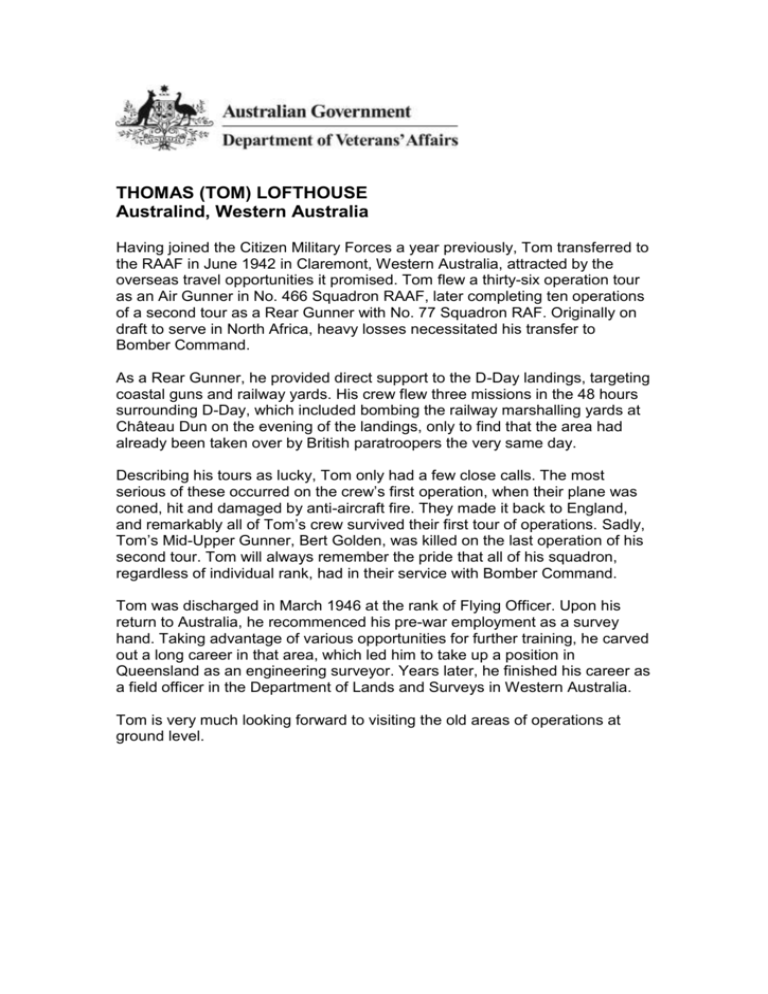
THOMAS (TOM) LOFTHOUSE Australind, Western Australia Having joined the Citizen Military Forces a year previously, Tom transferred to the RAAF in June 1942 in Claremont, Western Australia, attracted by the overseas travel opportunities it promised. Tom flew a thirty-six operation tour as an Air Gunner in No. 466 Squadron RAAF, later completing ten operations of a second tour as a Rear Gunner with No. 77 Squadron RAF. Originally on draft to serve in North Africa, heavy losses necessitated his transfer to Bomber Command. As a Rear Gunner, he provided direct support to the D-Day landings, targeting coastal guns and railway yards. His crew flew three missions in the 48 hours surrounding D-Day, which included bombing the railway marshalling yards at Château Dun on the evening of the landings, only to find that the area had already been taken over by British paratroopers the very same day. Describing his tours as lucky, Tom only had a few close calls. The most serious of these occurred on the crew’s first operation, when their plane was coned, hit and damaged by anti-aircraft fire. They made it back to England, and remarkably all of Tom’s crew survived their first tour of operations. Sadly, Tom’s Mid-Upper Gunner, Bert Golden, was killed on the last operation of his second tour. Tom will always remember the pride that all of his squadron, regardless of individual rank, had in their service with Bomber Command. Tom was discharged in March 1946 at the rank of Flying Officer. Upon his return to Australia, he recommenced his pre-war employment as a survey hand. Taking advantage of various opportunities for further training, he carved out a long career in that area, which led him to take up a position in Queensland as an engineering surveyor. Years later, he finished his career as a field officer in the Department of Lands and Surveys in Western Australia. Tom is very much looking forward to visiting the old areas of operations at ground level.

